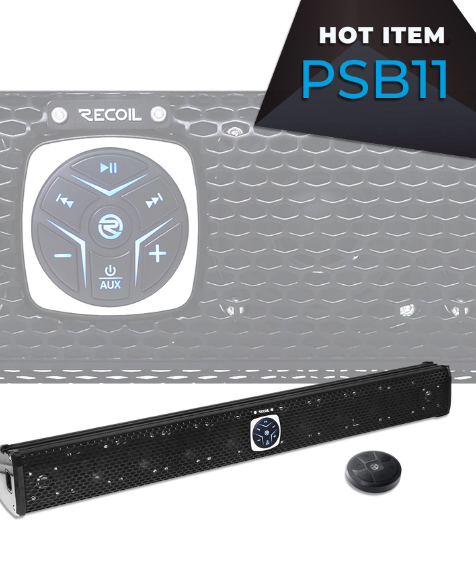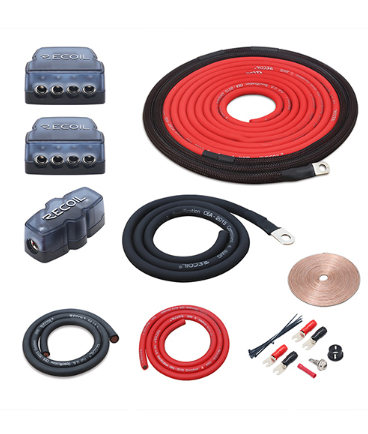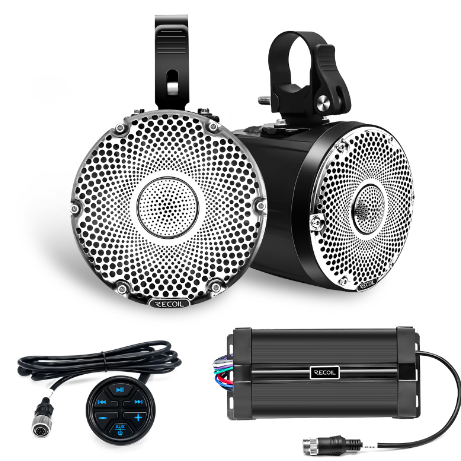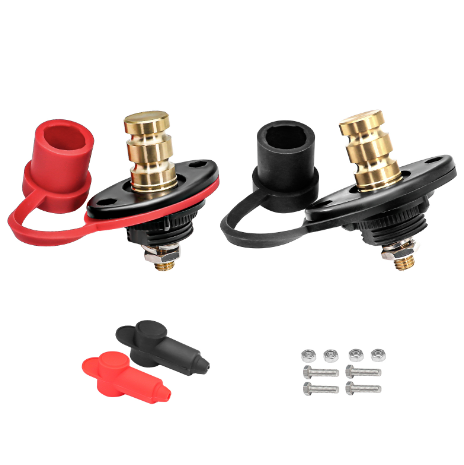Installing Bass Blockers: A Comprehensive Guide for Speakers and Tweeters
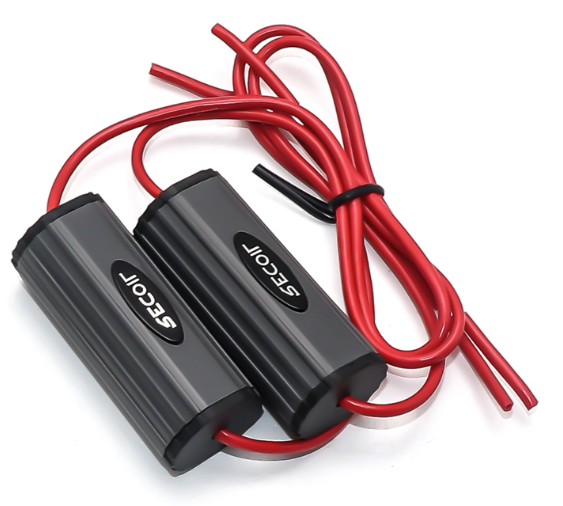
Enhancing your car audio system involves understanding the role of each component. One crucial element often overlooked is the bass blocker. Installing bass blockers can significantly improve the sound quality of your speakers and tweeters by filtering out low-frequency sounds that they aren’t designed to handle. This comprehensive guide will help you understand bass blockers and how to install them effectively for speakers and tweeters.
Understanding Bass Blockers
Bass blockers are capacitors that filter out low-frequency signals, protecting speakers and tweeters from distortion and potential damage. By only allowing higher frequencies to pass through, bass blockers ensure your speakers and tweeters operate efficiently and produce clear, crisp sound.
Benefits of Bass Blockers
- Improved Sound Quality: Bass blockers prevent low frequencies from reaching speakers and tweeters, reducing distortion and enhancing overall sound clarity.
- Protection: They protect speakers and tweeters from damage caused by low-frequency signals that can overextend the cone movement.
- Efficiency: By filtering out low frequencies, bass blockers ensure speakers and tweeters only produce the frequencies they are designed for, improving their efficiency.
Choosing the Right Bass Blockers for Speakers
Selecting the appropriate bass blockers for speakers depends on the speaker’s specifications and the desired cutoff frequency. Choosing bass blockers with the correct capacitance value is essential to match your speakers’ needs.
Steps to Select Bass Blockers
- Identify Speaker Specifications: Check your speakers’ frequency range and power handling capabilities.
- Determine Desired Cutoff Frequency: Choose a cutoff frequency that suits your audio system, typically between 80Hz and 150Hz for most speakers.
- Select the Appropriate Capacitance Value: Use a chart or calculator to find the capacitance value that matches your desired cutoff frequency and speaker impedance.
Installing Bass Blockers for Speakers
Proper installation of bass blockers ensures optimal performance and longevity of your speakers. Follow these steps to install bass blockers for speakers:
Tools Needed
- Wire cutters
- Wire strippers
- Soldering iron (optional)
- Electrical tape or heat shrink tubing
- Bass blockers
Installation Steps
- Disconnect Power: Always disconnect the power source before installing to avoid electrical shocks or damage.
- Access Speaker Wires: Remove the speaker from its mounting location to access the wiring.
- Cut and Strip Wires: Cut the positive wire leading to the speaker and strip the insulation from both ends.
- Connect Bass Blocker: Attach the bass blocker to the stripped ends of the positive wire. Ensure a secure connection using soldering or twisting and secure it with electric tape or heat shrink tubing.
- Reinstall Speaker: Secure the speaker back in its mounting location.
- Reconnect Power: Reconnect the power source and test the audio system to ensure proper installation.
Understanding Bass Blockers for Tweeters
Tweeters, designed for high-frequency sounds, can benefit significantly from bass blockers. These devices prevent low frequencies from reaching the tweeters, protecting them from distortion and damage.
Benefits of Bass Blockers for Tweeters
- Enhanced Clarity: By filtering out low frequencies, bass blockers ensure tweeters produce only high-frequency sounds, resulting in clearer and more detailed audio.
- Protection: Bass blockers prevent potential damage to tweeters caused by low-frequency signals.
- Improved Performance: Ensuring tweeters operate within their optimal frequency range enhances their performance and longevity.
Choosing the Right Bass Blockers for Tweeters
Selecting the correct bass blockers for tweeters involves understanding the tweeter’s specifications and the desired cutoff frequency. Proper selection ensures tweeters perform at their best without distortion.
Steps to Select Bass Blockers
- Identify Tweeter Specifications: Check your tweeters’ frequency range and power handling capabilities.
- Determine Desired Cutoff Frequency: Choose a cutoff frequency that suits your audio system, typically between 2kHz and 4kHz for most tweeters.
- Select the Appropriate Capacitance Value: Use a chart or calculator to find the capacitance value that matches your desired cutoff frequency and tweeter impedance.
Installing Bass Blockers for Tweeters
Installing bass blockers for tweeters follows a similar process to that for speakers. Ensuring a proper connection and secure installation is crucial for optimal performance.
Tools Needed
- Wire cutters
- Wire strippers
- Soldering iron (optional)
- Electrical tape or heat shrink tubing
- Bass blockers
Installation Steps
- Disconnect Power: Always disconnect the power source before installing to avoid electrical shocks or damage.
- Access Tweeter Wires: Remove the tweeter from its mounting location to access the wiring.
- Cut and Strip Wires: Cut the positive wire leading to the tweeter and strip the insulation from both ends.
- Connect Bass Blocker: Attach the bass blocker to the stripped ends of the positive wire. Protect a secure connection using soldering or twisting with electrical tape or heat therapist tubing.
- Reinstall Tweeter: Place the tweeter back in its mounting location and secure it.
- Reconnect Power: Reconnect the power source and test the audio system to ensure proper installation.
Tips for Optimal Installation of Bass Blockers
Achieving the best results from bass blockers requires careful attention to detail during installation. Here are some tips to help you install bass blockers effectively:
- Double-Check Connections: Ensure all influences are secure and free of exposed wires to prevent short circuits.
- Test Audio System: After installation, test the audio system to verify that the bass blockers are functioning correctly.
- Use Quality Materials: Invest in high-quality bass blockers and installation materials to ensure long-lasting performance.
- Consult Professionals: If unsure about any installation process, consult a professional for guidance.
Troubleshooting Common Issues
Even with careful installation, issues may arise. Knowing how to troubleshoot common problems can help maintain optimal performance.
Common Issues
- Distorted Sound: If sound distortion occurs, check the connections and ensure the bass blockers are installed correctly.
- No Sound: If no sound comes from the speakers or tweeters, verify that all connections are secure and the bass blockers are functioning properly.
- Intermittent Sound: Intermittent sound may result from loose connections. Ensure all wires are securely connected.
Troubleshooting Steps
- Inspect Connections: Check all connections for security and proper attachment.
- Test Components: Test each audio system component to isolate the issue.
- Replace Bass Blockers: If the problem persists, consider replacing the bass blockers to rule out a faulty component.
Recoil Audio’s Role in Providing Quality Bass Blockers
Recoil Audio offers a range of high-quality bass blockers designed to enhance the performance of both speakers and tweeters. Their products are engineered to provide optimal sound quality and protection, ensuring a superior audio experience.
Features of Recoil Audio Bass Blockers
- High-Quality Materials: Recoil Audio uses premium materials in their bass blockers to ensure durability and performance.
- Precision Engineering: Their bass blockers are precisely engineered to provide accurate cutoff frequencies and efficient filtering.
- Wide Range: Recoil Audio offers a variety of bass blockers to suit different audio systems and speaker specifications.
Benefits of Choosing Recoil Audio
- Reliable Performance: Recoil Audio bass blockers deliver consistent and reliable performance, enhancing your audio system’s overall quality.
- Easy Installation: Designed for easy installation, Recoil Audio bass blockers come with clear instructions and support.
- Comprehensive Support: Recoil Audio provides excellent customer support for installation or performance issues.
Maximizing Your Audio Experience
Installing bass blockers is a crucial step in optimizing your car audio system. By understanding the role of bass blockers and following proper installation procedures, you can significantly enhance your speakers’ and tweeters’ performance and longevity.
Additional Tips for Optimal Audio Performance
- Regular Maintenance: Inspect and maintain your audio system to ensure all components function correctly.
- System Upgrades: Consider advancing audio system components, such as amplifiers and wiring, to complement the benefits of bass blockers.
- Professional Assistance: Seek professional assistance for complex installations or troubleshooting to ensure the best results.
Conclusion
Bass blockers speakers, and tweeters play a vital role in protecting and enhancing the performance of car audio systems. Proper selection and installation of bass blockers ensure that your audio system delivers clear, high-quality sound while protecting your speakers and tweeters from damage. By following the steps outlined in this guide, you can confidently install bass blockers and enjoy an improved audio experience.
Recoil Audio provides top-notch bass blockers designed to meet the needs of various audio systems. Their products, combined with the knowledge from this guide, will help you achieve the best possible sound quality for your car audio system.

